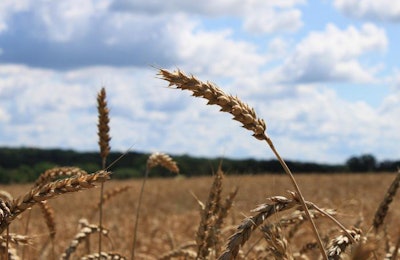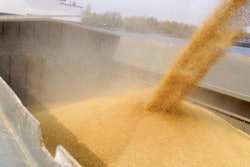
Storms up to 15 miles wide brought wind gusts up to 80 miles an hour and hail that ranged in size from pea-sized to baseball-sized to Kansas. Not only was there damage to cars and homes, but the already-struggling wheat crop was hit, too.
The southern Plains felt prolonged cold temperatures on a crop that didn’t have significant snow cover for protection. That, combined with dry conditions highlighted by the drought monitor report, are playing into the significant decline in Kansas wheat crop ratings, explained Justin Gilpin, CEO of the Kansas Wheat Commission and Kansas Association of Wheat Growers, earlier this spring.
According to Kansas Wheat, farmers in western Kansas lost 300 acres of irrigated wheat in 10 minutes when 70-miles-per-hour winds and marble-sized hail let lose. “You looked outside, and it just looked like winter,” a farmer told Kansas Wheat. The farmer estimated that the land lost in the storm would have averaged 40 bushels per acre before the storm.
Crops destroyed
East of the before-mentioned farmers, in Manning, Kansas, other farmers explained that from a distance the fields still looked somewhat stable; however, upon closer inspection, heads were bent over and stalks were broken in half. The ground even showed signs of the force left from the hail. Farmers within the Manning area reported that up to two-thirds of their crop was destroyed.
In Sharon Springs, Kansas, a farmer was not only burdened by damage to his home but also the fields around his home, which will be a total loss. The pre-hail yield estimate for the 325-acre field was 42 bushels per acre, the farmer told Kansas Wheat.
Only some of the mentioned farmers will benefit from their hail insurance, while others did not have a policy for the issue.
“This devastation follows a hard year, where Kansas wheat has suffered from drought. Many areas of the state have received less than an inch, up to only a couple inches of moisture since early October. Abandonment of acres has been more common than average, and only 7.8 million acres were planted last fall, which is the third lowest planted acres since 1913, up only slightly since last year,” the Kansas Wheat article concluded.















